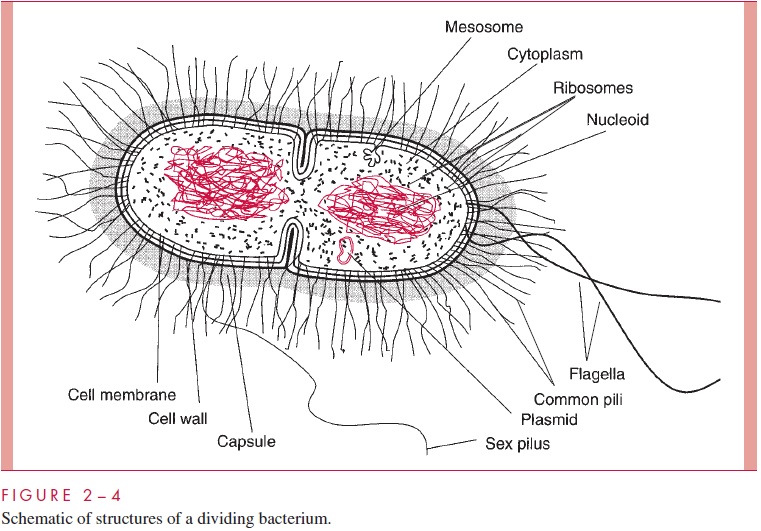Chapter: Medical Microbiology: An Introduction to Infectious Diseases: Bacterial Structures
Spores - Bacterial Structures
SPORES
Endospores are small, dehydrated, metabolically quiescent forms that are produced bysome bacteria in response to nutrient limitation or a related sign that tough times are coming. Very few species produce spores (the term is loosely used as equivalent toendospores), but they are particularly prevalent in the environment. Some spore-forming bacteria are of great importance in medicine, causing such diseases as anthrax, gas gan-grene, tetanus, and botulism. All spore formers are Gram-positive rods. Some grow only in the absence of oxygen (eg, Clostridium tetani), some only in its presence (eg, Bacillussubtilis).
The bacterial endospore is not a reproductive structure. One cell forms one spore un-der adverse conditions (the process is calledsporulation). The spore may persist for a long time (centuries) and then, on appropriate stimulation, give rise to a single bacterial cell (germination). Spores, therefore, are survival rather than reproductive devices.
Spores of some species can withstand extremes of pH and temperature, including boiling water, for surprising periods of time. The thermal resistance is brought about by the low water content and the presence of a large amount of a substance found only in spores,calcium dipicolinate. Resistance to chemicals and, to some extent, radiation is aided by extremely tough, special coats surrounding the spore. These include a sporemembrane (equivalent to the former cell membrane); a thick cortex composed of a spe-cial form of peptidoglycan; a coat consisting of a cysteine-rich, keratin-like, insoluble structural protein; and, finally, an external lipoprotein and carbohydrate layer called an exosporium.
Sporulation is under active investigation. The molecular process by which a cell pro-duces a highly differentiated product that is incapable of immediate growth but able to sustain growth after prolonged periods (centuries, in some cases) of nongrowth under ex-treme conditions of heat, desiccation, and starvation is of great interest. In general, the process involves the initial walling off of a nucleoid and its surrounding cytosol by in-vagination of the cell membrane, with later additions of special spore layers. Germination begins with activation by heat, acid, and reducing conditions. Initiation of germination eventually leads to outgrowth of a new vegetative cell of the same genotype as the cell that produced the spore.

Related Topics